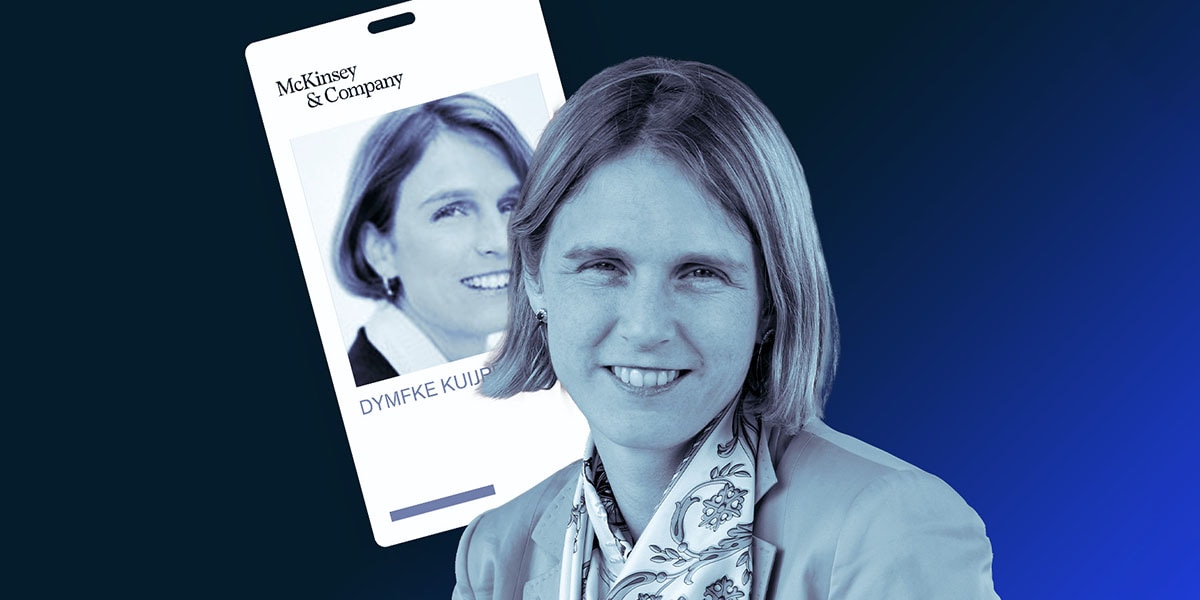
| Our best ideas, quick and curated | january 28, 2022
|
| This week, we look at how the COVID-19 crisis is driving sweeping changes in healthcare. Plus, why more commuters around the world are choosing bikes, and former US chief performance officer Beth Markle on making capability building more accessible for frontline workers. |
|
|
|
| The continuing fight against COVID-19 is propelling big changes in healthcare, including welcome shifts to virtual care that can meet consumer needs. But this is a tall order, given the pandemic’s adverse effects on global health, from children to seniors. |
| Kids in crisis. One of the most consequential outcomes of the pandemic has been to sharply increase behavioral and mental-health issues in kids and young adults. Dr. Kevin Churchwell, president and CEO of Boston Children’s Hospital, told McKinsey that during the pandemic, healthcare providers saw a shocking increase in the number of kids with these issues—treating 50 to 70 children per day, doubling or tripling the amount seen previously. |
| Gen Z in need. McKinsey consumer surveys also illustrate the extent of the youth mental-health crisis, with one in four Gen Z respondents saying that they feel emotionally distressed. That’s almost double the levels reported by millennials and Gen X, and more than triple the levels reported by baby boomers. Although Gen Z respondents were more likely to report having a behavioral-health issue, they were also less likely to seek help. That makes it even more crucial for leaders, educators, and employers to support young people. |
| These serious issues are propelling the industry to evolve to better meet the changing needs of patients, healthcare leaders tell McKinsey. The rise of virtual and home care, direct-to-consumer pharmacy start-ups, and new digital tools means that consumers have more ways than ever to make medical appointments, pay bills, and visit with providers. At the same time, consumer expectations for convenient, efficient healthcare have intensified as they have grown used to tech-enabled healthcare. |
| In a recent podcast, Humana’s Alan Wheatley and Alignment Healthcare’s John Kao discuss how US Medicare patients are reacting to the shifts to virtual care. For instance, with telehealth becoming the norm, seniors are less tolerant of long wait times and expect more timely access to care, Kao said. Wheatley added that in this age of digital care, making healthcare data accessible to patients, providers, and insurers is critical. Another important trend is that more care is moving from “big-box settings” into homes, he noted. |
| The in-home pharmacy. Technology is also driving changes in the $460 billion pharmacy sector. During the pandemic, consumers have clamored for the convenience of home delivery. Direct-to-consumer pharmacy start-ups make it possible for prescriptions and payments to be processed online, and medicines delivered a day later. At the same time, technology-driven innovations—such as virtual-care clinics—are also supporting the shift to home. For traditional pharmacies to keep up with the new crop of digital rivals, they’ll likely need to rethink their existing processes, technologies, and systems. |
| Widening gaps. In lower- and middle-income countries, the pandemic has worsened gaps in healthcare systems. According to the World Health Organization, even prepandemic, nearly a third of the population in those countries had to travel more than two hours to access essential healthcare. Loss of healthcare workers to COVID-19 and the disruption of transportation has made matters even worse. |
| But there is one bright spot: the growth in digital tools and technologies. McKinsey analyzed digital solutions in eight countries in Asia and Africa to learn how technology can improve countries’ responses to infectious-disease threats and strengthen primary healthcare. The analysis showed that partnerships between governments and digital-solutions providers can help projects scale up quickly. For example, a chatbot app launched by a start-up enabled more than 11 million symptom checks in South Africa. In addition, Vietnam partnered with a technology firm to develop an app in response to the pandemic; a quarter of the population has downloaded it. Improving healthcare systems may be difficult—but the world must be better prepared for the next pandemic. |
|
|

|
|
|
| INTERVIEW |
| Making capability building accessible to all |
| The problem with most capability-building programs, says Beth Cobert, COO of the Markle Foundation and a former US chief performance officer, is that “everybody sort of goes lockstep through them, whether they’re relevant to the person or not.” For frontline workers and individuals with less educational attainment, who may not have hours to devote to training, technology that breaks up material into smaller units can be a godsend. “Technology can help make programs more modular and bite-size, so that people can fit capability building into their lives,” Cobert explained in an interview with McKinsey. In addition, using insights from data to tailor learning to the individual can allow people to target the skills that will truly make a difference in their career, she added. |
|
|

|
|
|
| WHAT WE’RE DOING |
| My Rookie Moment |
| We’ve all been there. Early-career moments where we’ve stumbled on our way to finding success. It turns out that senior leaders at McKinsey have been there too. Episode five of My Rookie Moment focuses on mentorship, those moments when a trusted colleague helped them feel more confident, enabled them to grow and learn, and guided them around obstacles. |
| Liz Hilton Segel recalled her first experience leading a discussion as a young professional among senior executives. Since she was reluctant, her manager at the time suggested that the manager go first, with Hilton Segel taking the reins after that. Hilton Segel observed how her manager, “rather than running from conflict during the discussion, actually leaned into it and had people express their different points of view.” That gave her the confidence to not be afraid if the people in the room disagreed. Instead, she would “elicit each of their points of view to get to a better answer,” together. |
| For Dymfke Kuijpers, learning to amplify her strengths instead of focusing on her weaknesses was a defining moment in her career. The first time she ever worked as a project manager, she was so intent on doing everything perfectly that “it went absolutely nowhere,” Kuijpers said. At the end of the project, colleagues’ feedback on her leadership was “an endless list of what should have been done better,” leaving her feeling demoralized. Following the advice of a mentor, she decided to lead with her strengths. That enabled her to have a much more positive experience. “Don’t ever try to be perfect. Focus on the things you’re really good at and enjoy—amplify those,” Kuijpers said. “That gives you so much more joy and energy for yourself, for your teams, and for everyone around you,” she added. |
| Alberto Chaia shared that a five-minute conversation was all it took to reignite his passion for solving problems and restore his self-confidence. At a meeting with a CEO, Chaia recalls, he was quiet and didn’t participate. Afterward, he approached the McKinsey colleague leading the meeting and offered a few of his ideas. “The senior leader replied, ‘Those are fantastic ideas. Why didn’t you mention them?’” Chaia said. “That conversation gave me so much confidence that completely changed my approach to the way I was participating in meetings.” |
|
| — Edited by Belinda Yu |
|
|
Share this My Rookie Moment
|

|

|

|
|
|
|
|
| BACKTALK |
| Have feedback or other ideas? We’d love to hear from you. |
|
 |
|
|
Did you enjoy this newsletter? Forward it to colleagues and friends so they can subscribe too.
Was this issue forwarded to you? Sign up for it and sample our 40+ other free email subscriptions here.
|
|
|
This email contains information about McKinsey’s research, insights, services, or events. By opening our emails or clicking on links, you agree to our use of cookies and web tracking technology. For more information on how we use and protect your information, please review our privacy policy.
|
|
You received this email because you subscribed to The Shortlist newsletter.
|
|
|
|
Copyright © 2022 | McKinsey & Company, 3 World Trade Center, 175 Greenwich Street, New York, NY 10007
|
|
|
|





